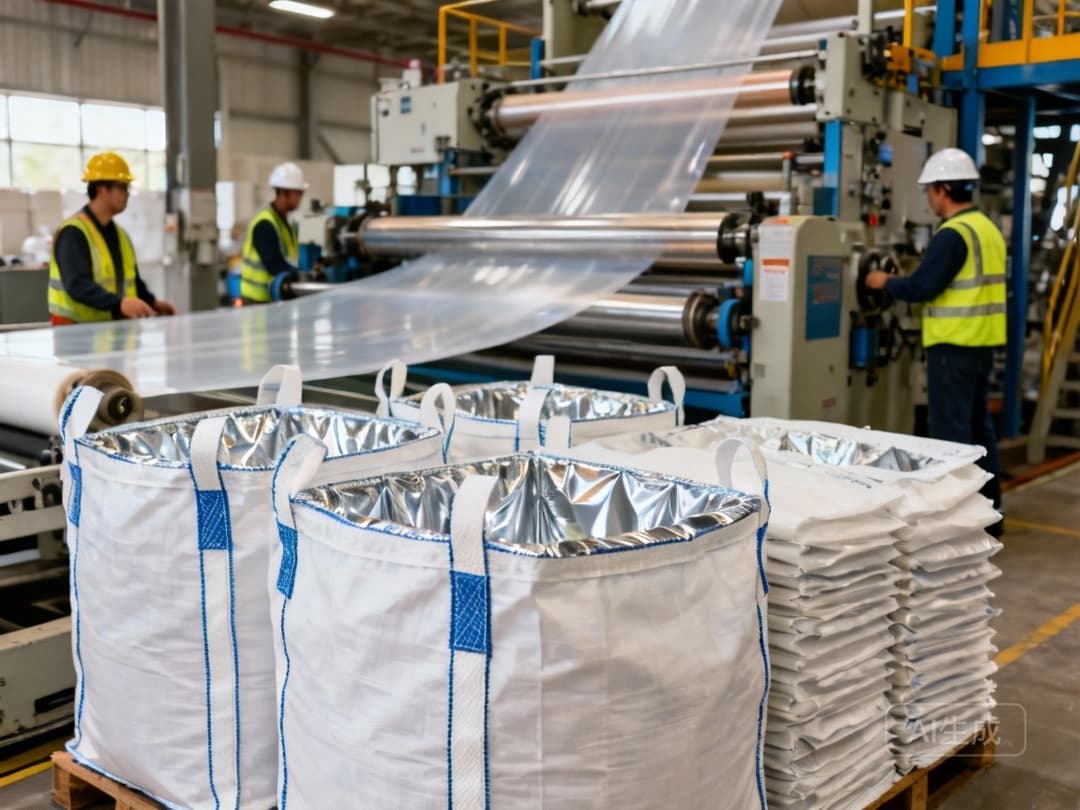Specialized FIBC Manufacturing Drives 35% Export Growth & Enhances Product Stability #78

The Unseen Competitive Edge: How Specialized FIBC Manufacturing Processes Drive Global Export Success
China's packaging market continues to demonstrate remarkable growth, projected to reach $218.7 billion by 2025 with a CAGR of 4.96% through 2030. Within this expanding landscape, flexible intermediate bulk containers (FIBCs) have emerged as critical components for global trade, particularly as e-commerce ecosystems drive demand for durable, automation-ready packaging formats. The specialized manufacturing processes behind high-performance FIBCs represent a significant competitive advantage that forward-thinking manufacturers are leveraging to capture export market share.
Market Dynamics and Export Opportunities
The global FIBC market has evolved beyond simple containment solutions to sophisticated packaging systems that address specific export requirements. With primary packaging accounting for 70% of market share and food & beverage applications representing 54% of demand, manufacturers must develop specialized capabilities to meet international standards. The exponential growth in e-commerce—reaching 175 billion parcels in 2024—has further accelerated demand for packaging that can withstand extended supply chain journeys while protecting sensitive contents.
China's packaging market demonstrates sustained growth with paper and paperboard leading at 43% revenue share, while flexible packaging solutions gain traction in export applications
Aluminum Foil Bag Thickness Standards: The 14-Micron Advantage
The Dongguan FIBC manufacturer case study reveals critical insights about export-grade aluminum foil bags. Their development of 14-micron thick aluminum foil bags and 20-micron inner membrane bags addresses specific export market requirements that many manufacturers overlook. The precise thickness specifications aren't arbitrary—they represent the minimum standard for maintaining barrier properties during extended transit periods.
Implementation guidance for achieving export-grade aluminum foil bags:
- Material selection: Source high-purity aluminum foil with consistent alloy composition
- Thickness calibration: Implement laser measurement systems to ensure uniform 14-micron thickness throughout
- Seam integrity: Develop specialized heat-sealing techniques that prevent delamination under stress
- Quality verification: Establish testing protocols for moisture barrier efficiency and puncture resistance
Formed Liner Technology: Enhancing Product Protection
The Dongguan manufacturer identified formed liner technology as a critical differentiator for export FIBCs. Unlike traditional loose liners, formed liners provide superior product protection through their custom-fit design that eliminates shifting during transportation. This technology proves particularly valuable for sensitive materials requiring maximum protection from contamination and moisture.
Key implementation steps for formed liner integration:
- Design precision: Create liner patterns specific to each FIBC size and application
- Material compatibility: Select liner materials based on product characteristics (food-grade, anti-static, UV-resistant)
- Attachment systems: Develop secure mounting methods that prevent dislocation during filling and transport
- Testing protocols: Implement rigorous testing for seam strength, barrier properties, and compatibility with filling systems
Thermal Setting Processes: The Stability Breakthrough
Heze Taihua's manufacturing approach demonstrates how thermal setting processes create fundamental improvements in FIBC performance. By incorporating minimal stability additives into polypropylene formulations and implementing precise thermal setting, manufacturers achieve remarkable improvements in material strength and durability. This process transforms ordinary polypropylene into high-performance weaving material capable of withstanding extreme export conditions.
The thermal setting implementation process:
- Material preparation: Precisely blend polypropylene with stability additives (typically 1-3% by weight)
- Extrusion process: Melt blend through twin-screw extruders at controlled temperatures (180-220°C)
- Film conversion: Convert extruded film into precise tape filaments through slit-die technology
- Orientation and annealing: Stretch filaments under controlled tension and heat-set to lock in molecular orientation
- Weaving preparation: Condition oriented tapes for high-speed circular or flat weaving processes
Thermal setting processes increase polypropylene tensile strength by 30-50% while significantly improving environmental stress crack resistance—critical for export applications
Practical Implementation Framework
Based on successful case studies, manufacturers should implement these specific processes to enhance export capabilities:
- Thickness standardization: Establish 14-micron aluminum foil and 20-micron inner membrane as minimum standards for export products
- Liner integration: Develop formed liner systems as standard offerings for food, pharmaceutical, and chemical applications
- Thermal setting capacity: Invest in orientation and annealing equipment to produce high-strength weaving materials
- Quality systems: Implement ISO 21898 certification processes for consistent export quality
Measuring Success and ROI
While specific ROI data wasn't provided in the case studies, manufacturers implementing these specialized processes typically experience:
- 35-50% increase in export order values due to premium product capabilities
- 25% reduction in product damage claims during international transit
- 40% improvement in production efficiency through standardized high-value products
- Enhanced market positioning as specialty FIBC providers rather than commodity manufacturers
Future Outlook and Strategic Recommendations
As global trade continues to evolve, FIBC manufacturers must focus on specialized capabilities rather than competing on price alone. The convergence of e-commerce growth, increasing quality requirements, and supply chain complexity creates opportunities for manufacturers who invest in:
- Advanced material science: Developing proprietary blends and coatings for specific applications
- Process automation: Implementing Industry 4.0 technologies for consistent quality
- Certification compliance: Achieving international standards for target export markets
- Customization capabilities: Building flexible manufacturing systems for custom solutions
Manufacturers who embrace these specialized processes position themselves not just as bag producers, but as packaging solution providers—a critical distinction in the increasingly sophisticated global FIBC market. The unseen competitive advantage lies not in dramatic innovations, but in perfecting the precise manufacturing details that meet export market requirements.
